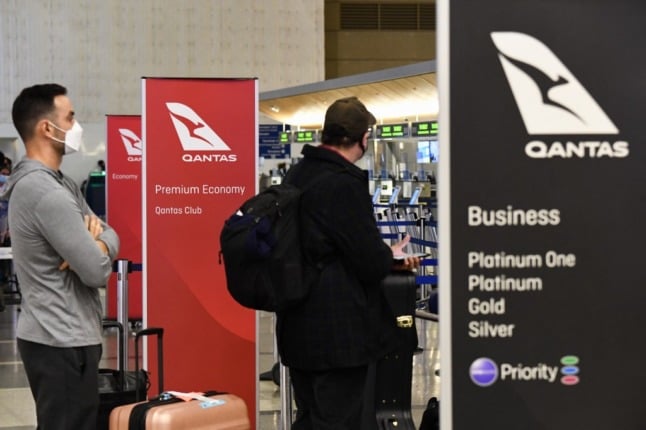Australia has been downgraded from France’s green list for travel and is now classified as orange, as the country experiences a rise in Covid case numbers. According to official figures, more than 400,000 people are currently infected with Covid in Australia – but a shortage of rapid antigen tests means that the true figure could be much higher.
The downgrading of Australia to the orange list was decreed in the Journal Officiel – which lists all decisions taken by the French government – on Saturday. Countries categorised as orange are considered to have “an active but controlled circulation of the virus.”
READ MORE How does France’s Covid traffic light system for travel work?
This new categorisation for Australia means unvaccinated travellers now need an essential reason to visit France – this does not cover tourist visits. If you are an unvaccinated French or EU citizen, or have a French titre de séjour, this counts as an essential reason to travel to France. These rules came into effect on Sunday, January 23rd.
Unvaccinated travellers are also required to self-isolate at a fixed address in France for seven days following arrival. They can leave quarantine if they test negative on Day 7.
All travellers coming from Australia, vaccinated or not, are required to take a PCR test at no more than 48 hours before departure – and obtain a negative result. Children under 11 years old do not need to take this test.
Unvaccinated travellers may be asked to undergo a Covid test at the airport upon arrival in France.
All unvaccinated travellers to France from Australia and other orange list countries are required to fill out the following form. Both unvaccinated and fully vaccinated travellers will need to fill out this one.
Vaccine pass
Once you’re in France, you will also be required to use a vaccine pass to access a wide range of public venues like cinemas, restaurants and museums. Full details HERE.
For people over the age of 18, you need either need to be fully vaccinated with a booster (taken within 7 months of completing a full vaccination cycle) or have proof of recent recovery from Covid.
If you were vaccinated in Australia, here’s how to access the French vaccine pass.
What counts as fully vaccinated?
To qualify as fully vaccinated, travellers must:
- Have received a vaccine that is approved by the European Medicines Agency – Pfizer, Moderna, AstraZeneca or Johnson & Johnson (also known as Janssen). The Indian-produced Covishield vaccine is now accepted by France
- Be at least seven days after the second injection for double-dose vaccines or after a single dose for those people who had previously had Covid-19
- Be at least 28 days after the injection for people who had the single dose Johnson & Johnson vaccine
- People who have received a vaccine that is recognised by the World Health Organisation but not yet approved for use by the EMA can travel to France if they have had a ‘top up’ single dose of either Pfizer or Moderna
A booster shot is not essential in order to enter France but, as mentioned above, you may need one to access venues including bars, cafés and long-distance trains.
What about travel to Australia?
France imposes the essential reasons criteria on non-vaccinated passengers travelling to Australia.
Australia is slowly opening its borders once again to international travel – although each state has its own rules on quarantine upon arrival. You can consult the official rules here.
Unless you are granted an exemption (for medical reasons for example) you will need proof of vaccination to travel to Australia and will need to fill out a travel declaration form prior to departure.
You currently need a visa to travel to Australia unless you are an Australian citizen or permanent resident. Permanent family members of these people and New Zealanders are allowed in, in some cases. Other temporary visa holders seeking to travel to Australia must apply for a travel exemption.
You must do a PCR test no more than 72 hours before your departure time to Australia unless you are travelling on a quarantine-free flight from New Zealand. You will need to present your negative test to the airline before boarding.
What other countries are on the orange list?
Argentina was also moved from the green to the orange list over the weekend. It joins most of South America, Asia and Africa.
You can consult a map detailing how countries are categorised here.



 Please whitelist us to continue reading.
Please whitelist us to continue reading.
What a joke ~ perhaps Macron should try looking at the infection rate in France !!!
Australia’s infection rate is through the roof when comparing our population to some European nations. We were comfortably sitting around the 140’s on the world covid chart and in a matter of months have shot up to 28. Don’t have a problem with any countries imposing restrictions on Australians, given how badly covid has been handled here in the last two months, by both Federal and State Governments. After all, we were happy to slam shut our international border, when other countries were overwhelmed with cases, what’s good for the goose is good for the gander.
the links to the online health pass are not useful as the service has been stopped. You are unable to submit online